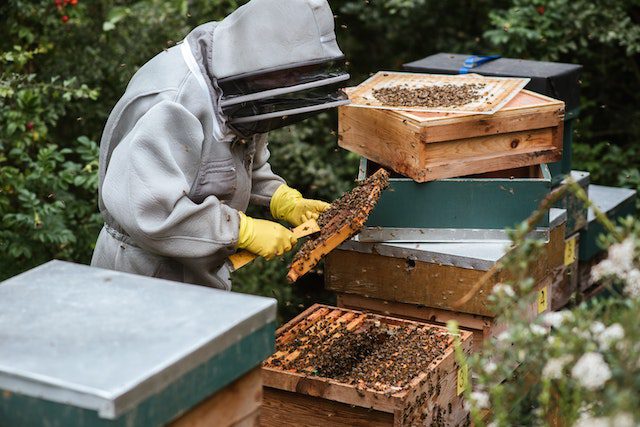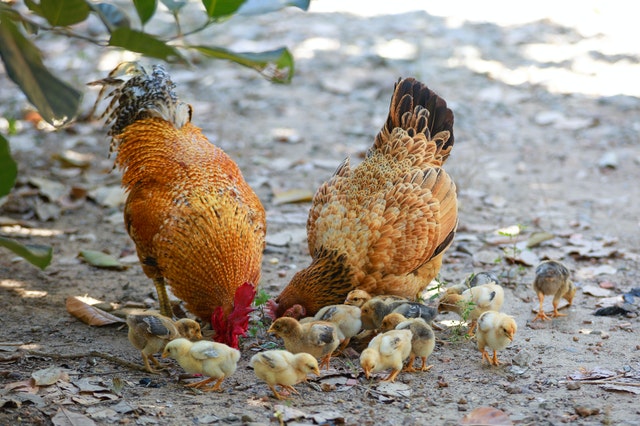Are you a flower farmer or a florist shop looking to make more money? In this post, we will give you a detailed marketing strategy for attracting new customers, retaining them and maintaining them for long-term business relationships.
As a successful flower supplier, your marketing efforts must satisfy four objectives for sustainable profits in the long term.
- Consistent production of high-quality blooms.
- Nurturing customer relationships.
- Captivating new audiences.
- Elevating your brand to thrive in a competitive market.
To turn your flower farm and florist shop into a flourishing profitable business, follow these 9 steps; market analysis, online marketing, email marketing and constant result measurement reporting and updates. It is our hope this will help you to attract new customers. Keep them coming back. These steps are
Step 1: Understanding Your Audience
To write and implement a successful marketing strategy, start by conducting a market analysis or research. It will help you to understand your present and potential customers It will also help you to tailor your engagement approach effectively.
In Kenya, you can categorize your potential customers into 4 distinct market segments. These can be based locally or in international markets.
- Occasion-Driven Shoppers: These individuals order flowers for milestone events like birthdays, anniversaries, weddings, and celebrations. They appreciate bespoke flower bouquets tailored to their unique occasions.
- Everyday Shoppers: This segment craves daily doses of floral beauty to brighten homes and offices. They favour low-maintenance varieties like potted plants or mixed bouquets that last longer.
- Corporate Clients: Businesses such as hospitals, government offices and hotels. They are in need of floral decor for corporate events, office spaces, and client gifting. They require professional, timely services and customization options to align with their brand image.
You will need to communicate with each group uniquely to satisfy their flower needs.
Step 2: Establish an Online Presence
In today’s digital era, your potential clients are more likely to order flowers online from your shop. They will need adequate information on prices, quality and other terms through research on their mobile phone and PCs. As such, your online presence is the gateway to your brand. Here’s how to build and nurture it in simple 5 tips.
- User-Friendly Website: Create a visually captivating, mobile-responsive website showcasing your flower farm, florist shop, and product catalogue. High-quality images, detailed descriptions, and a seamless shopping experience are non-negotiable.
- Invest in SEO: Harness the power of Search Engine Optimization (SEO) to enhance your website’s visibility. Strategic use of keywords like “fresh flowers,” “local florist,” and “wedding bouquets” will draw organic traffic.
- E-commerce Excellence: Enable online orders with secure payment options and a user-friendly checkout process, ensuring that your website becomes a revenue generator.
- Educational Blog: Offer valuable insights through informative blog posts. Share flower care tips, event decoration ideas, and emerging floral trends to position your brand as an industry authority.
- Engage on Social Media: Establish a robust presence on platforms like Instagram, Facebook, and Pinterest. Share captivating visuals, behind-the-scenes glimpses, and user-generated content to create a thriving online community.
Step 3: Showcase Your Unique Value Proposition
How do you beat competition from larger flower farmers in Kenya? To distinguish your flower farm and florist shop focus on your unique value propositions. These will be your competitive advantages and need to be stated clearly on your websites, social media and other traditional marketing media such as magazines.
- Sustainability: Spotlight your dedication to locally grown, eco-friendly flowers that contribute to the community and reduce carbon footprint.
- Personalized Services: Promote personalized consultations for weddings and events, emphasizing your meticulous attention to detail and customization prowess.
- Flower Quality Assurance: Institute a rigorous quality assurance program to guarantee the freshest, longest vase-life blooms. Broadcast your unwavering commitment to uncompromising quality.
Step 4: Tailor Marketing Messages to Audience Segments
Craft distinct marketing messages tailored to each audience segment: Below are the suggestions for each market segment in Kenya
- Occasion-Driven Shoppers: Develop strategic marketing campaigns around key occasions like Valentine’s Day, Mother’s Day, and weddings. Offer enticing flower packages and promotions.
- Everyday Shoppers: Advocate for incorporating daily floral beauty into life. Introduce subscription services for regular flower deliveries and provide educational content on flower care and arrangement ideas.
- Corporate Clients: Highlight your prowess in offering tailored floral solutions for corporate events and branding opportunities. Develop corporate packages with customizable branding options.
Step 5: Leverage Email Marketing
One of the key challenges for flower marketers is how to maintain existing customers to competition. Your marketing team can harness the magic of email marketing to nurture customer relationships: It’s cheaper and easier compared to traditional marketing. Here are the ways to do it as a pro.
- Build an Email List: Collect email addresses from your web visitors. Offer incentives like discounts or free flower care guides to encourage sign-ups.
- Segment Your List: Divide your list based on customer segments and preferences. Send personalized campaigns with relevant content and offers.
- Regular Newsletters: Share updates on new arrivals, seasonal promotions, and expert gardening tips. Engaging visuals should be a cornerstone of your newsletter strategy.
- Automated Follow-Ups: Set up automated email sequences to express gratitude for purchases, request reviews, and send reminders for special occasions or subscriptions.
Step 6: Collaborate and Partner
Collaborating with other stakeholders in the flower farming sector can be a strategy to make more money. You can benefit from local orders, exposure or an improved business climate. The best options for partnerships are
- Partner with Local Businesses: Forge alliances with local restaurants, hotels, and event planners. Offer floral arrangements for their events or co-create promotions that benefit both parties in CSR and discounted services.
- Flower Workshops and Events: Participate in flower shows and exhibits like the Naivasha Horticultural Fair. You can also organize flower-arranging workshops or DIY floral events in collaboration with local artisans or social media influencers. These events blend education with promotion to create a win-win scenario.
- Farmers Association; Join the Fresh Produce Exporters Association of Kenya (FPEAK). The association will provide you with advocacy, market intelligence, capacity building, quality assurance, and networking services, helping you to thrive in the global market.
Step 7: Gather and Showcase Customer Reviews
Positive customer reviews are the new currency in the era of online flower selling. Positive reviews and testimonials show trust and credibility in your brand and the quality of flowers and services from your flower buyers.
- Encourage Reviews: Proactively request honest reviews from customers via follow-up emails after purchases. Consider running review contests to incentivize participation.
- Showcase Reviews: Display customer testimonials prominently on your website and in-store. Amplify positive reviews through social media and marketing materials such as Facebook, Posters and testimonials in dailies and magazines with wide circulation among your targeted marketers.
Step 8: Measure and Optimize
How will you know your marketing efforts are bearing fruits? Invest in constantly monitoring and evaluating (M&E) your marketing goals using practical key performance indicators (KPIs): Some cheap methods and tools of measuring if your marketing plan is working are;
- Google Analytics: Employ Google Analytics to monitor website traffic and user behaviour. Use this data for iterative website optimization and campaign improvements.
- Social media engagement: Similar to website traffic, track your social media pages and handles to measure engagement, complaints and other customer feedback measures.
- A/B Testing: Experiment with diverse marketing messages, visuals, and promotions to pinpoint what resonates most effectively with your audience.
- Customer Surveys: Gather feedback through online surveys to refine your products and services based on customer insights.
Step 9: Stay Up-to-Date with Trends
“Education is the passport to the future, for tomorrow belongs to those who prepare for it today”-Malcolm X
Ongoing learning, training and research are the best ways to equip yourself to face the challenges of tomorrow in production and marketing your flowers. It will help your flower farm or shop to stay attuned and flexible to the latest industry trends to stay competitive. Some ways you will benefit are in
- Sustainable Practices: Modern consumers value sustainability and identity with flower sellers reducing their carbon footprint and climate change. Remember to promote your eco-friendly practices, such as recycling, composting, and plastic waste reduction.
- Seasonal Offerings: Align your floral offerings with seasonal changes and holidays. Introduce unique arrangements and promotions to captivate your audiences during valentines, Mother’s days and weddings.
By diligently implementing this comprehensive marketing strategy, your flower farm and florist shop will not only gain more customers but also cultivate a lasting, prosperous legacy in the world of blooms and blossoms.



